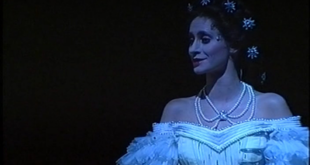By: Will Wu
What is music? How do people now define music? By searching online and in a dictionary, I found out that the definition of music is an art of sound in time that expresses ideas and emotion in significant forms through the elements of rhythm, melody, harmony, and color. However, That is what I call “ the general view of music” or “ public view on music”, in other words, for myself I have a different definition. My definition of music is a form of creativity.
I believed that many people have heard those terms like “ melody”, “ harmony” and “ rhythm” which are basic parts of music. For instance, in the most basic composition process, people create a melody, think through how to harmonize it and decide to play in what rhythm. This sounds like a math equation – just plug in this and get music. But think about the process. How do people come up with a melody line. Is it coming from middle of nowhere? And how do people know to harmonize the melody and to know what rhythm they are going to use? Maybe you can say people could learn this from music theory and past experiences, which are elements that can’t be denied. However, there is a role for creativity, which leads people plot the melody with harmony and rhythms the way the do. Because music theory hasn’t changed through many years, people need to have creativity to make new beautiful songs from the rigid function. Brainstorming is a process to get a musical idea, so past experience can help people with the creative process. But nothing can replace creativity.
We just discussed the general composition which requires creative input, but now we are about to look at the musical pieces. Transitions and cadences are two difficult parts of composition. There are different ways to create a transition. I learned that the most simple transition was the sudden transition (abrupt modulation). This creates no transition, just directly changes the style, the key and the tempo. But this method could not be used in all situations. Most of the time, we want to use a pivot chord modulation which enables a smooth change from one key to another. A pivot chord is a chord that belongs both the home key and the key the music is changing to. People who learn music theory know about both these ways of modulations. But how to use those modulations in a creative way is always a problem. So the transition part need people’s creativity to find a comfortable or appropriate way to not only transfer the music smoothly, but also to make the listener feel satisfied and or even amazed. The other part is cadences which is the ending of a music piece. Still, there are different kinds of cadences. It contains two big categories depending on whether the last chord ends on the tonic or not: finished cadences and unfinished cadences. Furthermore, finished cadences include the authentic cadence and plagal cadence. On the other side, unfinished cadences include imperfect and interrupted/deceptive cadence. How could people lead their music pieces to those fixed ending? Why do different composers have hundreds of ways to lead toward those four types of endings? It is all because people have creativity which helps them to plot an innovative way to the end part of the music.
To sum up, creativity is an indispensable part of music, even though we might need experience as well. Creativity helps us to make music unique. Lastly, creativity gives us the vision to create new types of music. That is why I call music a form of creativity.
 Tempus Magazine By Students, For Students
Tempus Magazine By Students, For Students 


